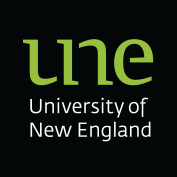Full description
Reinstating connectivity is seen as one way to ameliorate biodiversity loss resulting from agricultural activities. Natural resource management agencies require scientific knowledge to better inform revegetation programmes for increasing connectivity. Concepts of metapopulation theory and landscape ecology have been combined to produce spatially explicit outputs based on fragmentation-sensitive and poor-dispersing woodland species and which are designed to improve the occurrence and persistence of biodiversity. Selected outputs have been incorporated into the operations of a NRM revegetation programme. The results from the research provide alternative management options relevant to variegated and fragmented landscapes. Spatial data, spreadsheets, R scriptsData time period: 2013 to 2016
Spatial Coverage And Location
text: North West Local Land Services
text: Northern Tablelands Local Land Services
Subjects
Biodiversity forecasting tool |
Border rivers gwydir catchment |
Environment |
Environmental Science and Management |
Environmental Sciences |
Expanding Knowledge |
Expanding Knowledge |
Environmental Management |
Environmental Rehabilitation (Excl. Bioremediation) |
Expanding Knowledge in the Environmental Sciences |
GIS |
Generic focal species |
Geographic information system |
Landscape ecology |
Metapopulations |
Rehabilitation of Degraded Environments |
Revegetation |
Spatial links tool |
Strategic basic research |
User Contributed Tags
Login to tag this record with meaningful keywords to make it easier to discover
Identifiers
- Handle : 1959.11/23419

- Local : une:1959.11/23419


